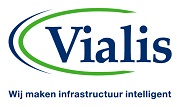Dear SUMO users,
I have some questions about vehicles and the use of DUAROUTER:
1.
I try to generate passenger cars on the base of measured flow counts (in aggregation periods of a quarter during the day) and besides that I try to generate individual
busses on particular time stamps. The input route file I made looks something like this:
<routes>
<vType accel="1.9" color="yellow" decel="4.5" guiShape="passenger" id="passengerCar" length="4.5" maxSpeed="36" sigma="0.7"/>
<vType accel="0.8" color="red" decel="3.5" guiShape="bus" id="bus" length="12" maxSpeed="25" sigma="0.7" width="2.5"/>
<route edges="3_i_1 3_i_0 4_e_0 4_e_1" id="12"/>
<vehicle depart="403" id="0" route="12" type="bus"/>
<vehicle depart="2174" id="1" route="12" type="bus"/>
<flow begin="0" end="900" from="3_i_1" id="2" number="20" to="4_e_1" type="passengerCar"/>
<flow begin="900" end="1800" from="3_i_1" id="3" number="13" to="4_e_1" type="passengerCar"/>
<flow begin="1800" end="2700" from="3_i_1" id="4" number="15" to="4_e_1" type="passengerCar"/>
<flow begin="2700" end="3600" from="3_i_1" id="5" number="18" to="4_e_1" type="passengerCar"/>
</routes>
If I run DUAROUTER, this leads to a route file with vehicle tags. But first all the busses are generated with the right time stamps and after that the passenger
cars are generated. The output looks like this:
<routes xmlns:xsi="http://www.w3.org/2001/XMLSchema-instance"
xsi:noNamespaceSchemaLocation="http://sumo.dlr.de/xsd/routes_file.xsd">
<vType id="bus" length="12.00" maxSpeed="25.00" guiShape="bus" width="2.50" color="red" decel="3.5" sigma="0.7"/>
<vehicle id="0" type="bus" depart="403.00">
<route edges="3_i_1 3_i_0 4_e_0 4_e_1"/>
</vehicle>
<vehicle id="1" type="bus" depart="2174.00">
<route edges="2_i_1 2_i_0 3_e_0"/>
</vehicle>
<vType id="passengerCar" length="4.50" maxSpeed="36.00" guiShape="passenger" color="yellow" accel="1.9" decel="4.5" sigma="0.7"/>
<vehicle id="269.0" type="passengerCar" depart="0.00">
<route edges="3_i_1 3_i_0 4_e_0 4_e_1"/>
</vehicle>
…
</routes>
Is it possible to automatically generate all vehicles in the right order of depart times with DUAROUTER?
2.
I want to give the generated busses additional information, like the line number, by adding attributes to the vehicle tag. For instance:
<vehicle depart="403" id="0" route="12" type="bus" line="56"/>
When I run DUAROUTER the vehicles containing the attribute “line” don’t show up in the output file. What am I doing wrong here?
3.
My goal is to give priority to busses in the traffic light program during the simulation. There are two possible ways in doing so:
-
The bus passes a detector. The information about the line number is passed to the control application when passing
-
The vehicle information (location, speed, heading, line number) is passed continuously to the control application
I’d like to know for both ways what the best solution is in doing so. Which detector type should I use, how do I call the information from the vehicle, etc.
Can anybody give me guidance and advice?
Thank you in advance.
Best regards,
Martin Barto
Sr. Verkeerskundige
Mobiliteit


Vialis is een Koninklijke
VolkerWessels onderneming.
Postbus 184, 3990 DD Houten | tel. +31648510557 mob. +31648510557
.
.


